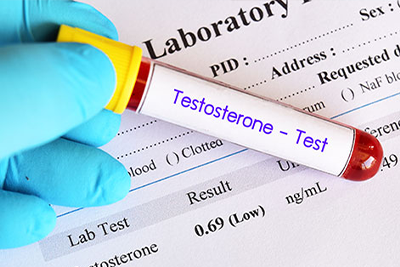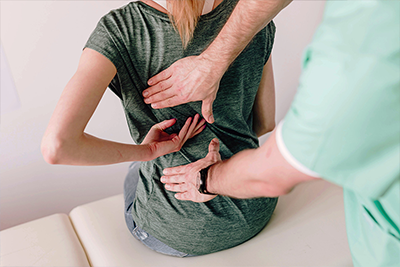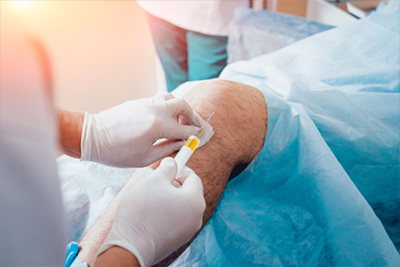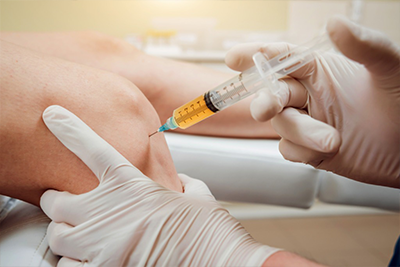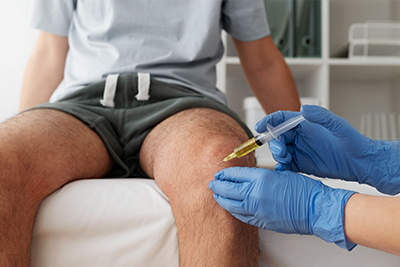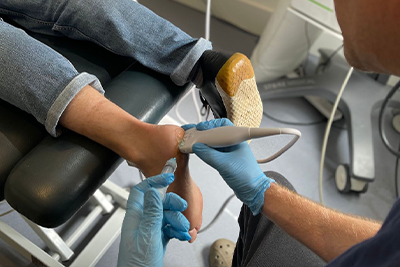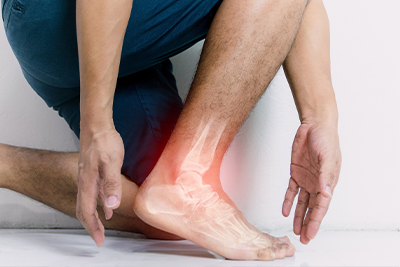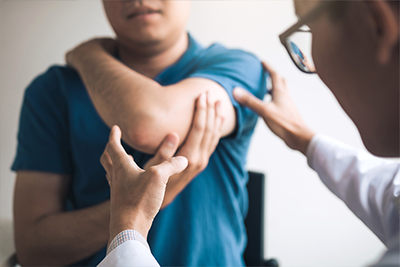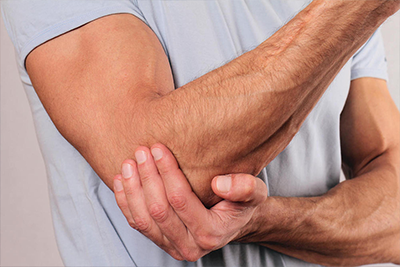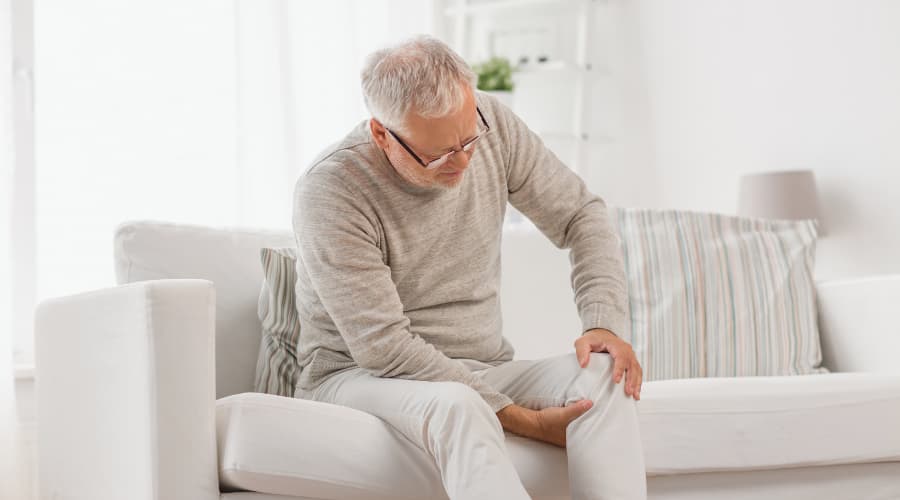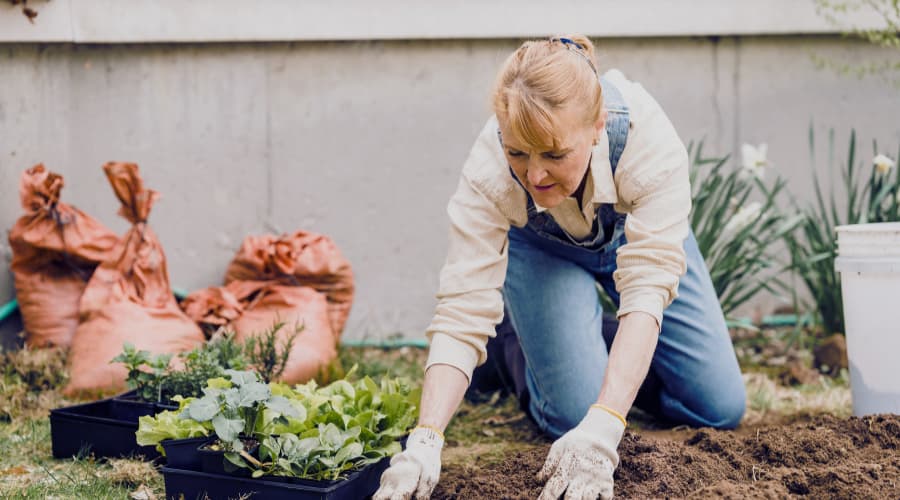Vale Health Clinic is dedicated to providing exceptional patient care and improving the quality of life for those we serve. Our experienced chiropractic professionals are committed to helping you achieve optimal health through personalised treatment plans and compassionate care.
Sciatica is a condition that affects millions of people worldwide and causes significant pain and discomfort. It occurs when the sciatic nerve, which runs from the lower back down to the legs, becomes irritated or compressed. This can result in symptoms, including sharp pain, tingling, numbness, and muscle weakness in the affected leg. Various factors, such as herniated discs, spinal stenosis, or piriformis syndrome can cause sciatica.
While sciatica can be debilitating, numerous strategies and treatments are available to alleviate pain and prevent future episodes.
Sciatica
Sciatica is a condition characterised by pain that radiates along the path of the sciatic nerve, the longest and thickest nerve in the body. This nerve originates in the lower back, splits through the hips and buttocks, and extends down each leg. When the sciatic nerve is irritated or compressed, it can cause pain that ranges from mild discomfort to severe, debilitating pain.
Several common conditions can lead to sciatica. Herniated discs occur when the soft inner material of a spinal disc pushes through its more rigid exterior, pressing on the sciatic nerve. Spinal stenosis, the narrowing of the spinal canal, can also compress the nerve. Another cause is piriformis syndrome, where the piriformis muscle in the buttocks spasms and compresses the sciatic nerve. Each of these conditions can result in the characteristic pain associated with sciatica.
-
Symptoms of Sciatica
Sciatica symptoms can vary widely but typically include pain radiating from the lower back down through the leg. This pain can be sharp, shooting, or burning, often accompanied by tingling or a pins-and-needles sensation. Numbness in the affected leg or foot is also common, as is muscle weakness, which can affect mobility and make standing or walking difficult. The intensity of these symptoms can range from mild to severe, and they may worsen with prolonged sitting, standing, or movement.
Tips for Relieving Sciatic Pain
-
Stay Active
Maintaining your normal activities as much as possible is crucial when dealing with sciatic pain. While it might be tempting to rest and avoid movement, staying active can significantly help reduce pain and promote recovery. Gentle exercises and regular movement help keep the muscles engaged and prevent stiffness, which can exacerbate sciatic pain. Simple activities like walking around home or performing light chores can benefit.
-
Exercise Regularly
Regular exercise is one of the most effective ways to manage sciatica. Different types of exercises can provide various benefits:
Aerobic Exercises:
Walking, swimming, and cycling can increase your heart rate without putting too much strain on your back and legs. These exercises help improve overall fitness and reduce the frequency and severity of sciatic pain episodes.
Strength Training:
Exercises that build muscle strength, particularly in the core, can provide better support for your spine. Weight training, free weights or resistance machines, and isometric exercises like planks can help strengthen these muscles.
Flexibility Exercises:
Activities like yoga and Pilates focus on enhancing flexibility and strength, which can alleviate sciatic pain. These exercises help stretch tight muscles and improve posture, reducing pressure on the sciatic nerve.
-
Heat and Cold Therapy
Applying heat and cold packs can provide immediate relief for sciatic pain. During the first 72 hours of a flare-up, use cold packs to reduce inflammation and numb the painful area. Wrap an ice pack in a towel and apply it to the affected area for 15-20 minutes.
After the initial 72 hours, switch to heat therapy to relax tense muscles and improve blood flow. Use a heating pad on the painful area for 20 minutes. Alternating heat and cold can be particularly effective in managing pain and promoting healing.
-
Proper Sleep Positions
The way you sleep can have a significant impact on sciatic pain. Certain positions can help alleviate pressure on the sciatic nerve and reduce pain:
On Your Back:
Lie with a pillow under your knees. This position helps maintain the natural curve of your spine and reduces pressure on the lower back.
On Your Side:
Place a pillow between your knees if you prefer sleeping on your side. This helps keep your spine aligned and reduces strain on the lower back and hips.
Using these sleeping positions and supportive pillows can improve spinal alignment and reduce sciatic nerve irritation, leading to more restful sleep and less pain upon waking.
Treatment Options
-
Physical Therapy
Physical therapy plays a vital role in managing and treating sciatic pain. Physical therapists are trained to create individualised exercise programs targeting the specific needs of sciatica patients. These programs typically include stretching, strengthening, and aerobic exercises to alleviate pain and improve mobility.
Common techniques used by physical therapists include:
Stretching Exercises:
To increase flexibility and relieve pressure on the sciatic nerve.
Strengthening Exercises:
It focuses on the core muscles, which support the spine and reduce the risk of further injury.
Aerobic Conditioning:
Walking or swimming enhances overall cardiovascular health without excessive strain on the back.
Physical therapy addresses the immediate pain and helps prevent future episodes by strengthening the muscles and improving posture.
-
Medication
Medications can provide significant relief for those suffering from sciatic pain. Over-the-counter options, such as acetaminophen (Tylenol) and nonsteroidal anti-inflammatory drugs (NSAIDs) like ibuprofen, are often recommended for initial pain management. These medications help reduce inflammation and alleviate pain.
In more severe cases, prescription medications may be necessary. These can include:
Muscle Relaxants:
To reduce muscle spasms contributing to the pain.
Pain Relievers:
For short-term relief of severe pain.
Consult a healthcare provider before starting any medication regimen to ensure safety and effectiveness, particularly for long-term use.
-
Alternative Therapies
Several alternative therapies are effective in managing sciatic pain. These therapies offer non-invasive options that can complement traditional treatments:
Acupuncture:
This ancient Chinese practice involves inserting thin needles into specific points on the body to relieve pain. Some studies suggest acupuncture can be more effective than conventional treatments in reducing sciatic pain.
Massage Therapy:
Regular massage can help reduce muscle tension and improve circulation, alleviating sciatic pain. It also promotes relaxation and overall well-being.
Chiropractic Care:
Chiropractors use spinal adjustments to improve spinal alignment, which can reduce pressure on the sciatic nerve. Evidence suggests that chiropractic care can be effective for some individuals with sciatica, especially when combined with exercise and other treatments.
Each therapy has its own benefits, and their effectiveness can vary from person to person. Consulting with a healthcare provider can help determine the best combination of treatments for managing and alleviating sciatic pain.
Related Articles:
- Sitting Comfortably with Sciatica
- Pain Relief Tips for Aching Joints in Winter
- Sciatica – Information & Treatment
- Deep Tissue Massage & Sports Massage Information
- Chiropractor or Osteopath for a Trapped Nerve or Sciatica


